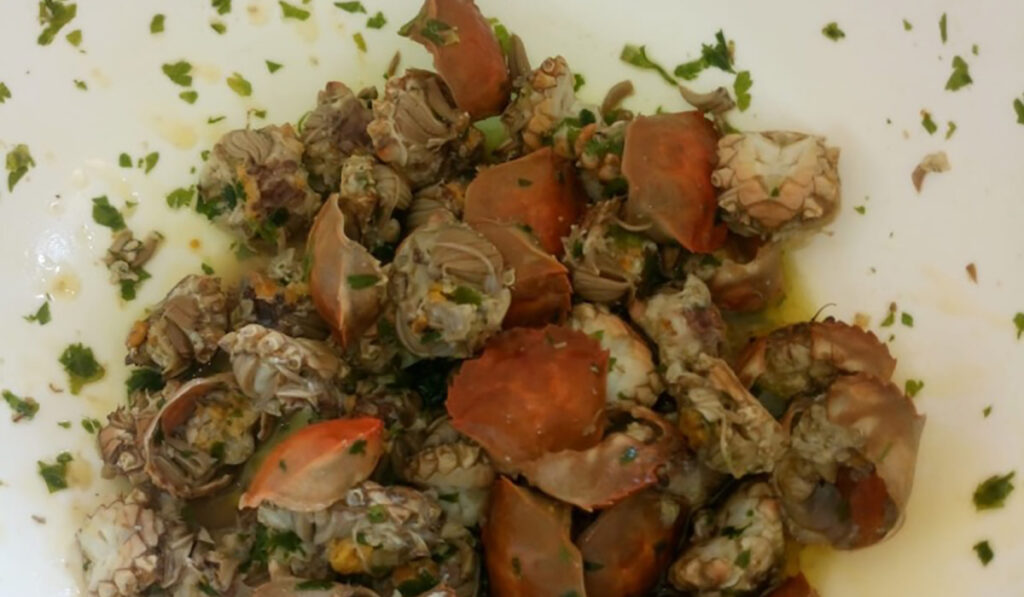The common crab that inhabits the shallow waters of the Venice lagoon reproduces in spring (April/May) and autumn (October/November). In these periods the crabs change their outer habit, the carapace, and the phenomenon takes the name of moulting. In Venice, crabs after moulting are called “moeche” and are delicious, see post. At the end of summer, the female crabs, when full of eggs, are called “masanete”.
For centuries, fishermen from the Venetian lagoon have been selecting moulting crabs. It is an activity that requires great experience. The “boni” crabs, those that will mutate in two to three weeks, are separated from those that will mutate in a couple of days (spiantani). The “mati” crabs, those that will not mutate in the season, will be thrown back into the water. The “spiantani” and “boni” will be placed in separate “vieri”, sort of round wooden boxes that let the water pass, which will be lowered in the shallow water habitat suitable for crabs.
Here is the recipe for the “masanete”:
Wash the masanete (the females of the crabs) several times, then boil them in abundant, slightly salted boiling water; you should put them in a pot still alive to make sure they are very fresh. Cook them for seven to eight minutes, no more, then turn off the heat and let them cool in their water. Drain them, remove the legs and, with a scissor, cut the carapace. Put the masanete in a salad bowl, dress them still warm with chopped garlic and parsley, oil, salt and pepper. Let them rest for at least an hour to absorb the seasoning, then serve them, perhaps accompanied by slices of white polenta and a good prosecco. Enjoy your meal!






